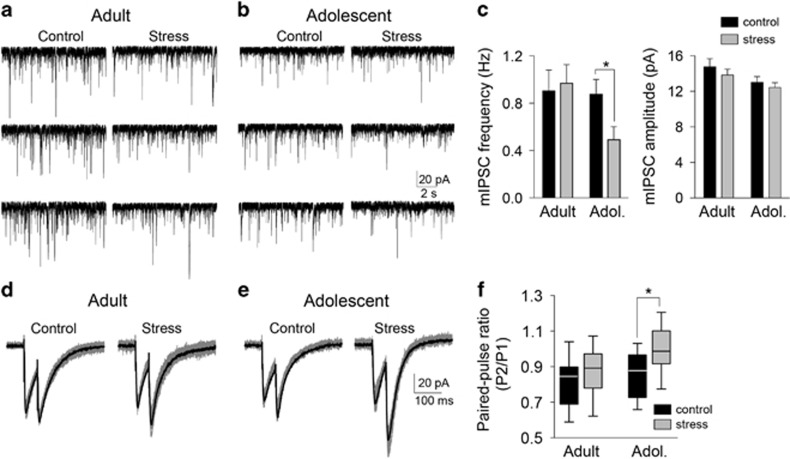Figure 3.
Repeated stress decreases γ-aminobutyric acid (GABA) release in adolescents. Miniature inhibitory postsynaptic currents (mIPSCs) reflect release from GABAergic terminals, independent of GABA interneuron firing. mIPSCs were measured from lateral nucleus (LAT) principal neurons ex vivo with the addition of tetrodotoxin citrate (TTX). (a) Repeated stress had no apparent effect on the frequency of mIPSCs in these examples from adult rats. (b) Repeated stress decreased the frequency of mIPSCs in these examples from adolescent rats. (c) Repeated stress significantly decreased the frequency of mIPSCs in adolescent rats (*p<0.05, Holm–Sidak's multiple comparisons test after significance in two-way analysis of variance (ANOVA) but not in adult rats. Repeated stress had no significant effect on the amplitude of mIPSCs (p>0.05 two-way ANOVA). (d) As further evidence for a presynaptic effect of repeated stress on GABA release, paired-pulse ratio was measured. Repeated stress had minimal impact on the relative amplitude of paired pulses in these examples from adult rats (gray: overlay of 10 traces; black: average of traces). (e) Repeated stress shifted the relative amplitude of paired pulses in these examples from adolescent rats. (f) Repeated stress significantly increased the paired-pulse ratio in adolescent rats (*p<0.05, Holm–Sidak's multiple comparisons test after significance in two-way ANOVA) but not in adult rats.

